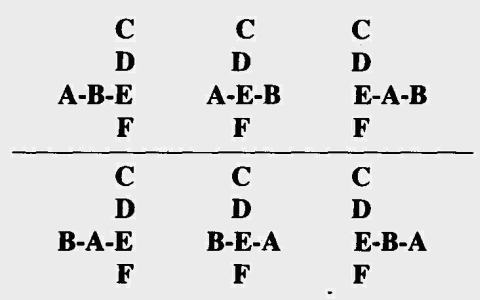Trifectas are the most popular form of 'exotic' bet in Australia. Millions of dollars are wagered on this type of bet each week. Punters like the trifecta because it offers the chance of a big collect.
But, like most other aspects of racing, riches do not fall easily into one's hands. Finding the first three placegetters in a race is a difficult task, and becomes more difficult as the fields get bigger in number.
Below is a table showing the number of possible outcomes up to an 11-horse race - by 'outcome' I mean the number of different combinations of the first three placegetters.
| Horses | Outcomes |
|---|
| 11 | 990 |
| 10 | 720 |
| 9 | 504 |
| 8 | 336 |
| 7 | 210 |
| 6 | 120 |
| 5 | 60 |
| 4 | 24 |
| 3 | 6 |
The bettor's task is to analyse a field and try to trim it down to financially manageable proportions. The following are some ideas for trimming the contenders. Examine the various factors to see if you agree with them, or some of them.
(1) ELIMINATING NONCONTENDERSHorses that ran 6th or worse and were beaten by 7 lengths or further at their last start should be discarded from contention. Also, horses which have not raced for 30 days or more should be eliminated, unless you know for certain they can race very well first-up from a spell (check your formguide thoroughly).
(2) SELECTING THE BEST CHANCESUse the 'most favoured' column in your newspaper formguide. Check out the selections of your favourite tipster. Use your own value judgement, after form analysis, to pin down the major prospects.
(3) THE KEY HORSEMany races have stand-out contenders, be it an even-money favourite or just a horse which you have isolated through your own selection skills. Keep this horse in mind.
If you have a sound 'key' horse, my suggestion is that you wheel it with 5 other contenders in the following manner:
1 (key horse) x 5 (possible 2nds) x 4 (possible 3rds) = 20 units outlay.
Now we come to the special trifecta approach by which you use two key selections to run 2nd and 3rd. As we all know, often to our chagrin, and sometimes to our delight, hotpots can be beaten out of the win money! They usually get beaten when you back them!
To allow for this sort of happening, you can take four or five contenders to win the race, with your two hot selections to finish 2nd and 3rd.
But the play we come to is one that quite a few clever bettors like to use in their trifecta operations. It's a simple yet effective betting method, and it doesn't cost much.
Suppose you like horses A and B and have identified C, D, E and F as the other chances in the race. In other words, you are confident A and B will be right there in the finish but you can't split the remainder. This is the strategy:

This is a total of 24 bets, but it can be modified, as long as you are sure that A or B will win. In this case, you can forget about the third column of bets.
What the bets mean is this: In the top first column you are taking A to win and B to run 2nd with C, D, E and F for 3rd. Then in the top second column you are taking A to win with C, D, E and F to run 2nd and B to run 3rd. In the top third column you are taking C, D, E and F to win with A to run 2nd and B to run 3rd.
In the bottom first column, you are taking B to win from A with C, D, E and F to run 3rd. In the next column you are betting B to win the race with C, D, E and F to finish 2nd and A to run 3rd. In the final bottom column you are taking C, D, E and F to win with B to run 2nd and A to run 3rd.
As a final extension of this idea, you can use the approach of the A-B-Field and B-A-Field trifecta. This is used in those races where you are supremely confident of clicking the first 2 horses - so confident that you take them to run 1st and 2nd, in both ways, and then link the field with them to run 3rd.
The cost isn't great. It depends on how big the field is, but the maximum you can be up for would be $44 in a 24-horse field. That is A-B with 22 runners ($22) and B-A with 22 runners ($22). You can, of course, limit the outlay by taking your trifecta for 50c units. The bet then, in the same field, would total $22.
Usually, though, you will be operating on much smaller fields, say 10 to 14 runners. In this case, say for a 10-horse field, you would have A-B with 8 runners ($8) and B-A with 8 runners ($8) - a bet of $16 or $8 using 50c units.
By Jon HudsonPRACTICAL PUNTING - SEPTEMBER 1993